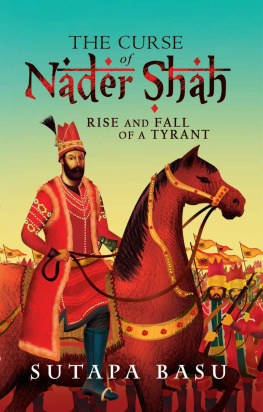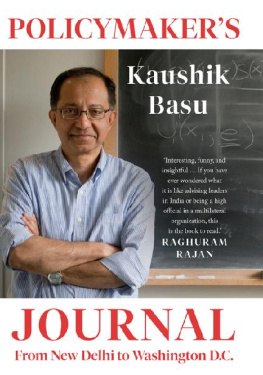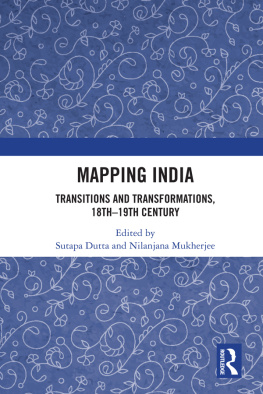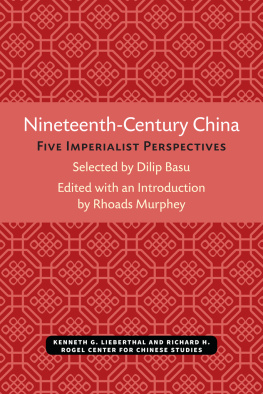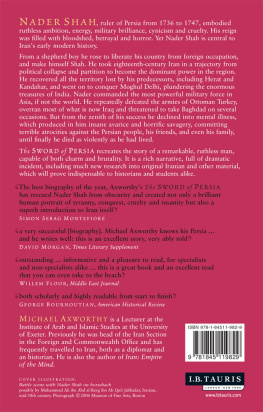Sutapa Basu - The Curse of Nader Shah
Here you can read online Sutapa Basu - The Curse of Nader Shah full text of the book (entire story) in english for free. Download pdf and epub, get meaning, cover and reviews about this ebook. year: 2019, publisher: Readomania, genre: Detective and thriller. Description of the work, (preface) as well as reviews are available. Best literature library LitArk.com created for fans of good reading and offers a wide selection of genres:
Romance novel
Science fiction
Adventure
Detective
Science
History
Home and family
Prose
Art
Politics
Computer
Non-fiction
Religion
Business
Children
Humor
Choose a favorite category and find really read worthwhile books. Enjoy immersion in the world of imagination, feel the emotions of the characters or learn something new for yourself, make an fascinating discovery.
- Book:The Curse of Nader Shah
- Author:
- Publisher:Readomania
- Genre:
- Year:2019
- Rating:5 / 5
- Favourites:Add to favourites
- Your mark:
- 100
- 1
- 2
- 3
- 4
- 5
The Curse of Nader Shah: summary, description and annotation
We offer to read an annotation, description, summary or preface (depends on what the author of the book "The Curse of Nader Shah" wrote himself). If you haven't found the necessary information about the book — write in the comments, we will try to find it.
The Curse of Nader Shah — read online for free the complete book (whole text) full work
Below is the text of the book, divided by pages. System saving the place of the last page read, allows you to conveniently read the book "The Curse of Nader Shah" online for free, without having to search again every time where you left off. Put a bookmark, and you can go to the page where you finished reading at any time.
Font size:
Interval:
Bookmark:





CAST OF CHARACTERS
Nader Qoli Afshar: Commander of the Persian army who became the Shah of Persia
Firuzeh Begum: Woman who married Nader Shah when he was a lieutenant in the Persian army
Peri : A Rajput girl and slave whom Nader Shah loved and married
Reza Qoli Mirza : Nader Shahs eldest son and heir
Nasrollah Mirza : Nader Shah and Firuzeh Begums son
Arman : Nader Shahs elder brother
Ebrahim Qoli: Nader Shahs younger brother
Ali Qoli: Ebrahim Qolis son
Muhammad Qoli Khan Qajar: Commander of the Afshar troops and related to Nader Shah
Abraham Cathalicos: Head of the Armenian Christian Church in Persia
Laleh : Attendant and close confidante of Firuzeh Begum
Ahmad Shah Abdali : Commander of the Afghan Abdali troops
Tahmasp Jalayer Khan : Close associate of Nader Shah
Agha Bashi : Chief Attendant of Nader Shah
Saleh Khan: Head of Nader Shahs household
Alvi Khan : Hakim or physician from Hindustan
Muhammad Shah: Emperor of the Mughal Empire
Khan Dowran : Commander-in-Chief of the Mughal army
Nezam Ol-Mulk: Mughal Viceroy of the Deccan regions
Sadaat Khan : Governor of Awadh
Sultan Mahmud : Sultan of the Ottoman Empire
PREFACE
A great Arab historian, Ibn Khaldun, had developed a theory on the rise and fall of ruling Islamic dynasties way back in the 13 th century. According to it, warlike nomad tribes first begin to dominate the countryside, then go on to conquer cities. They set up dynasties and rule the urban population. But once established, the ruler of the new dynasty distances himself from his former nomad supporters. The secure dynasty, then, augments its prestige by erecting splendid monuments. This theory applies perfectly to the Safavids who appeared in Persia in the late 15th century as leaders of a Turcoman tribe from eastern Anatolia. They conquered Azerbaijan, western Persia, Fars and Khorasan. Esmail crowned himself Shah in 1501. When he wanted to return to Anatolia, he was defeated by the army of the Ottoman Empire. Thus the rule of the new regime remained restricted to the borders of ancient Persia. The bitterness between the Ottoman and Safavid empires was worsened by the Sunni/Shia religious schism.
When Shah Abbas the Great ascended the throne in 1588, the Safavid dynasty erected magnificent buildings and Isfahan became a splendid example of this tendency. However, the tough, austere principles that had established the dynasty were lost. The rulers gave themselves up to a life of pleasure and indolence. Inherited wealth that should have been used for the state was squandered. Eventually, the Safavid dynasty became prey to conquering nomads like the ones that had once instituted it.
The last Safavid monarch, Shah Soltan Hosein was an indolent drunkard and womaniser. His reign saw a resurgence of tribal revolts, such as that of Lazgis in Daghestan as well as Afghan incursions into Persia. Mahmud, chief of the Ghilzai Afghan tribes fought and defeated the Persian armies. He laid siege to Isfahan and finally in October 1722, Shah Soltan Hosein removed his jique , the symbol of Persian royalty, and fastened it on Mahmuds turban ending over two centuries of Safavid rule in Persia.
During this period what was happening in Hindustan?
The Mughal Empire that was founded by Babur in 1526 reached the zenith of its power during the rule of Akbar the Great from 1556 to 1605. Babur had descended from the Turco-Mongol conqueror Timur on his fathers side and from the Mongol Emperor, Genghis Khan, on his mothers side. The name of the dynasty Mughal is derived from an Arabic and Persian corruption of the word Mongol. The dynasty was Indo-Persian in culture, its emperors being of Persian and Rajput ancestry. In fact, Akbars mother was a Persian princess but his heir, Jahangir was the son of a Rajput princess and so was Shah Jahan, the next Mughal king. This fifth emperor who ruled from 1628 to 1658 is best remembered for his architectural wonders, the most famous being the Taj Mahal, a tomb built for his wife, Mumtaz. In 1639, he built the walled city of Delhi, made it the capital of the Empire calling it Shahjahanabad. Many buildings all over the Mughal Empire were commissioned by this Emperor along with the Red Fort with its beautiful palaces and halls as well as the Jama Masjid in Delhi. He also commissioned the Peacock Throne, the jewelled throne located in the Diwan-i-Khas of the Red Fort and the seat of all Mughal kings. His heir, Aurangzeb was somewhat austere in nature. While the Empire grew strong during his reign from 1658 to 1707, the culture and the splendour of the Mughal court diminished. After his death, rebellions broke out in the Empire that his son, Bahadur Shah I tried to control. After the demise of the seventh emperor, the Mughal Empire fell into complete chaos. In 1719 itself, four emperors successively ascended the throne but failed to quell the turmoil. It was in the reign of Muhammad Shah who ruled from 1719 to 1748, that the Empire began to break up and vast regions of it passed into Maratha hands. This Emperor also enjoyed the redoubtable notoriety of being the ruler who proffered the magnificent Mughal Empire on a platter to an invader and allowed the infamous sack of Delhi.
It was during this crucial period, specifically 173839, that Hindustan and Persia were connected, once again, all due to the untrammelled ambitions of an indomitable man.
In 1698, a boy was born in the wild and dangerous north-eastern frontier region of Persia. His father, Emam Qoli, was a lowly herdsman of the Afshars, a semi-nomadic Turcoman tribe settled in Khorasan. He proudly named his son, Nadr Qoli, meaning Slave of the Wonderful. Years later, after becoming the Shah, his son changed it to Nader meaning Rarity. As a boy, Nader was a good horseman, hunter and racer of horses. He was skilled with the bow and arrow and the javelin. Naders father died when he was about ten years old plunging the family into abject poverty. His mother, brother Ebrahim and he had to struggle to exist. However, the miseries of this period bonded the family well. At fifteen, Nader went to serve Baba Ali Beg Kuse Ahmadhu, the governor of Abivard and soon became his right-hand man. Here, he learned to use the smooth-bore musket and the skills of modern warfare. Eventually, these experiences led him to exploit the potential of various weapons and revolutionise warfare in Persia.
After defeating a large raid by Turkmen of the Yomut tribe in Khorasan, Baba Ali chose Nader to take the news to Isfahan. He was presented to Shah Soltan Hosein who rewarded him with 100 tomans . During his first visit to Isfahan, Nader was not impressed by the courtly pomp. He disdained the vain ostentation, pettiness, laziness and dithering of the court officials. When he returned, Baba Ali married Nader to his daughter. In 1720, Nader took over the fortress of Kalat as his stronghold, later known as Kalat-e-Naderi. His fascination with it stemmed from the fact that it had been his idol, Timurs fort. An inscription in the fort seemed like a message from Timur to Nader: The man who comes to this place shall become the rarity of the age. Do not be proud when your army wins a victory but thank God.
Next pageFont size:
Interval:
Bookmark:
Similar books «The Curse of Nader Shah»
Look at similar books to The Curse of Nader Shah. We have selected literature similar in name and meaning in the hope of providing readers with more options to find new, interesting, not yet read works.
Discussion, reviews of the book The Curse of Nader Shah and just readers' own opinions. Leave your comments, write what you think about the work, its meaning or the main characters. Specify what exactly you liked and what you didn't like, and why you think so.

